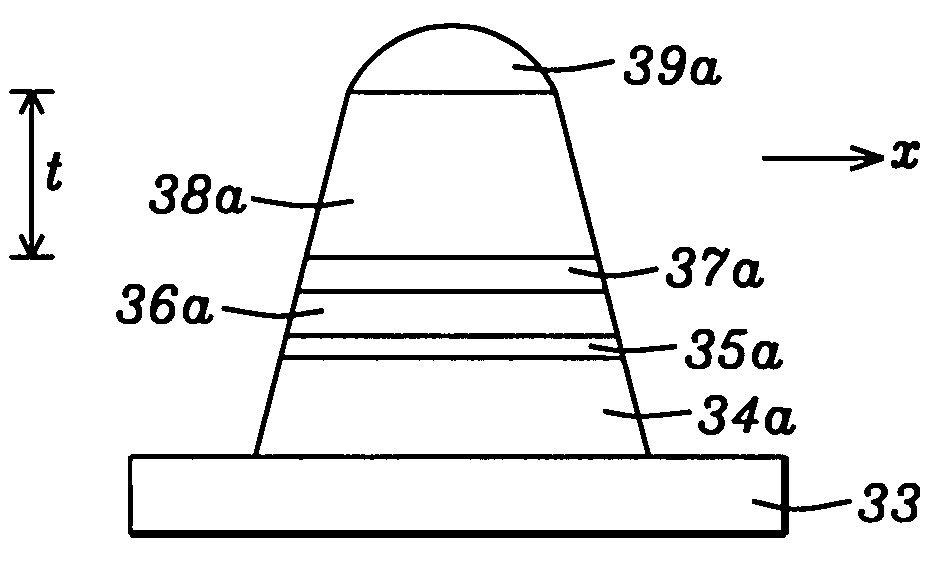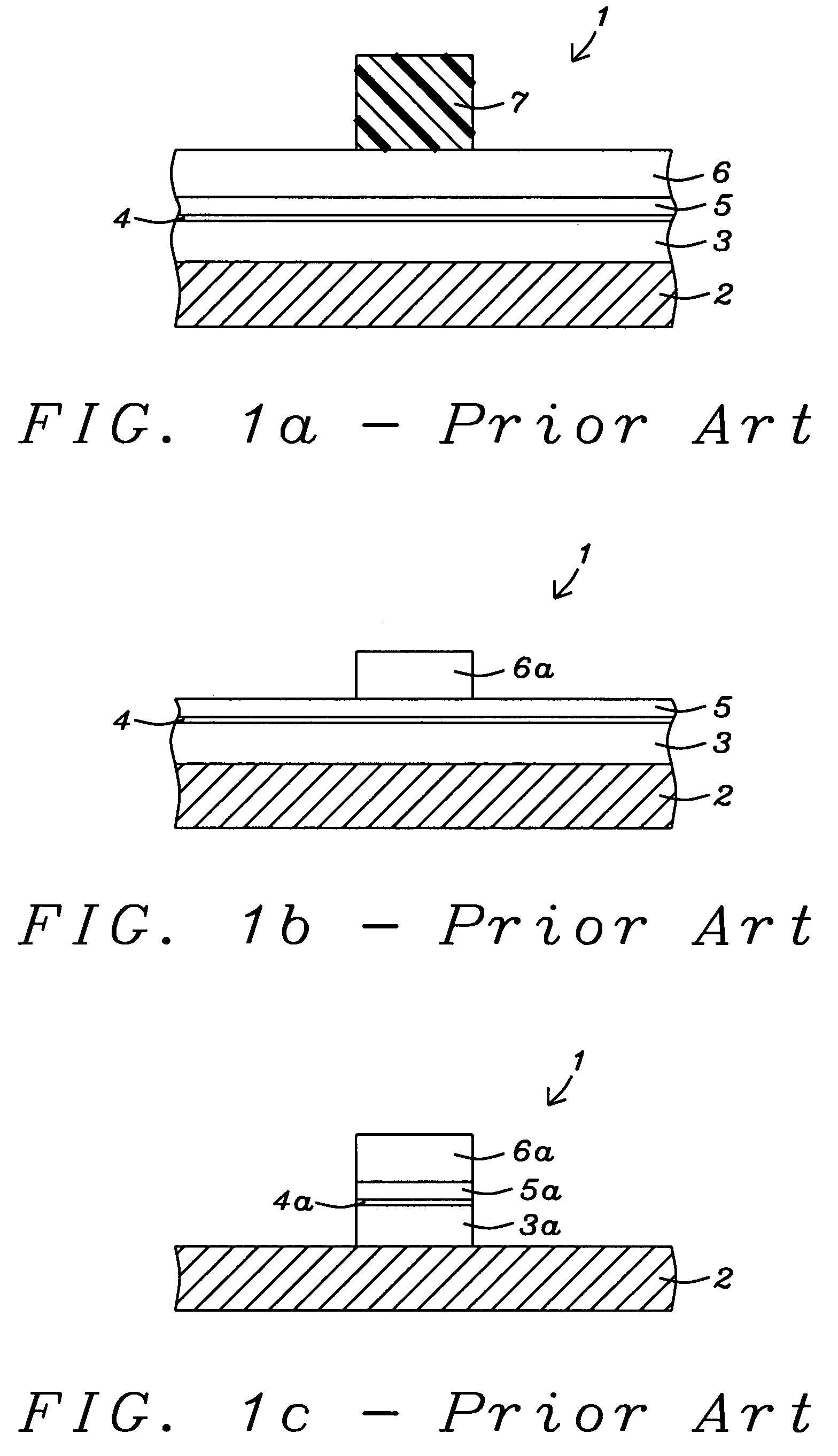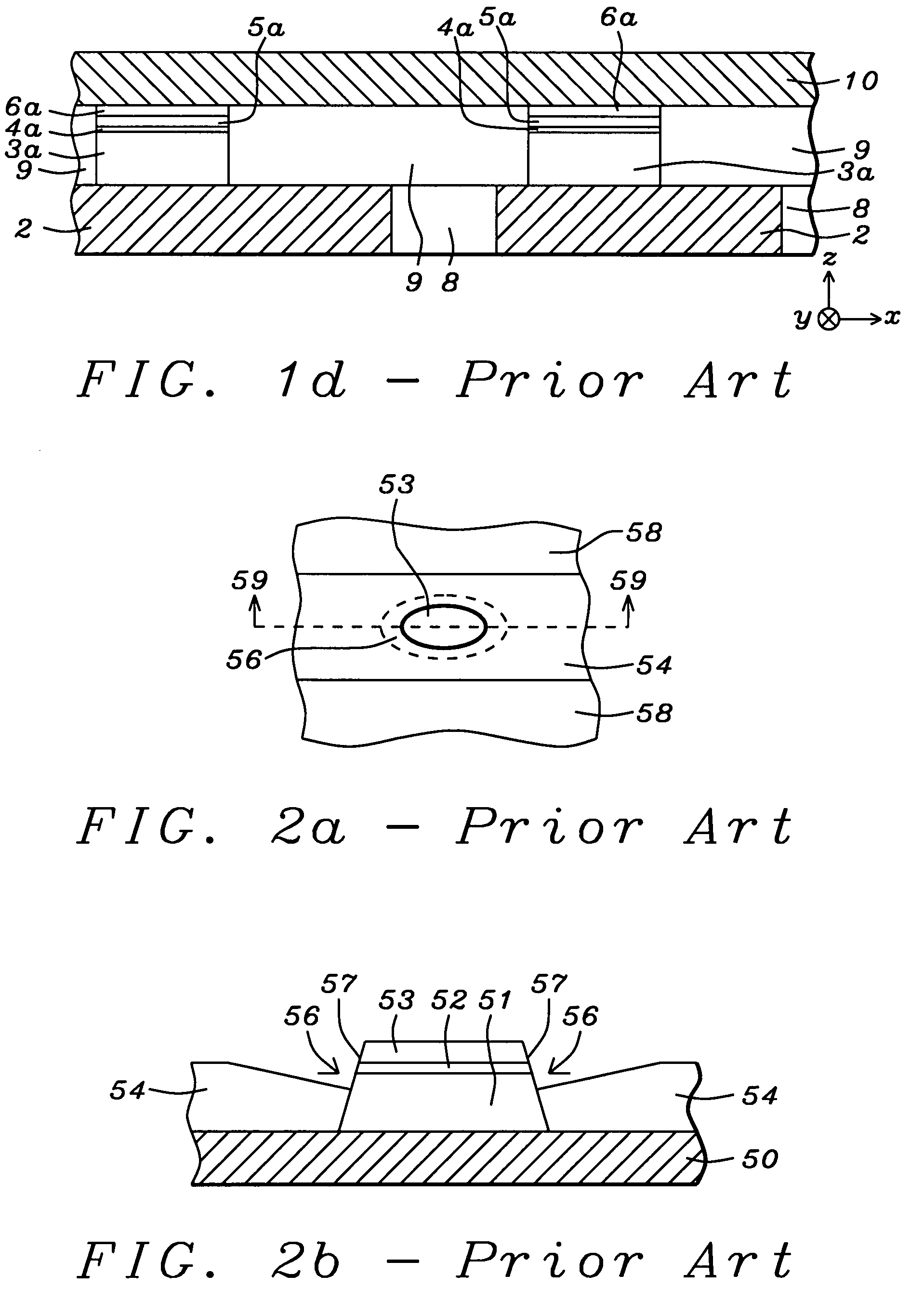Composite hard mask for the etching of nanometer size magnetic multilayer based device
a nanometer-size magnetic multi-layer, hard mask technology, applied in semiconductor devices, thin material processing, electrical equipment, etc., can solve the problems of limiting the further reduction of line width, unable to manufacture a very high density ic device as is required for spin torque mram applications, and electrical shorting in the device, so as to prevent electrical shorting
- Summary
- Abstract
- Description
- Claims
- Application Information
AI Technical Summary
Benefits of technology
Problems solved by technology
Method used
Image
Examples
Embodiment Construction
[0025]The present invention is a hard mask design and a method of using the hard mask to form MTJ cells having sub-100 nm resolution for advanced memory devices. The drawings are provided by way of example and are not intended to limit the scope of the invention. Further, the drawings are not necessarily drawn to scale and the relative sizes of various elements may differ from those in an actual device. Although a bottom spin valve MTJ structure is described in the exemplary embodiment, the present invention also encompasses other MTJ configurations such as top spin valve and multi-layer spin valve structures. A related MTJ etching process has been disclosed by the inventors in MagIC patent application HMG07-026 which describes the formation of easy axis and hard axis dimensions in a MTJ cell by employing separate photolithography steps and is herein incorporated by reference in its entirety.
[0026]A method of fabricating a MTJ cell by employing a composite hard mask structure accord...
PUM
| Property | Measurement | Unit |
|---|---|---|
| thickness | aaaaa | aaaaa |
| thickness | aaaaa | aaaaa |
| thickness | aaaaa | aaaaa |
Abstract
Description
Claims
Application Information
 Login to View More
Login to View More - R&D
- Intellectual Property
- Life Sciences
- Materials
- Tech Scout
- Unparalleled Data Quality
- Higher Quality Content
- 60% Fewer Hallucinations
Browse by: Latest US Patents, China's latest patents, Technical Efficacy Thesaurus, Application Domain, Technology Topic, Popular Technical Reports.
© 2025 PatSnap. All rights reserved.Legal|Privacy policy|Modern Slavery Act Transparency Statement|Sitemap|About US| Contact US: help@patsnap.com



